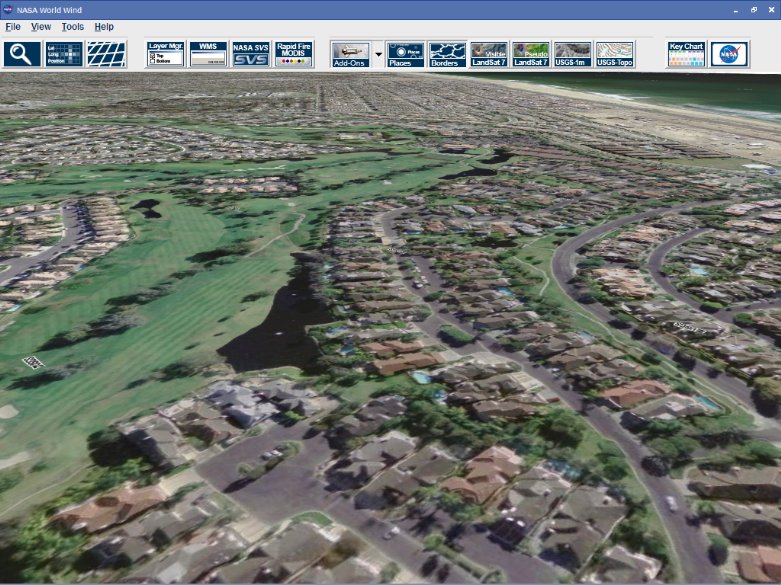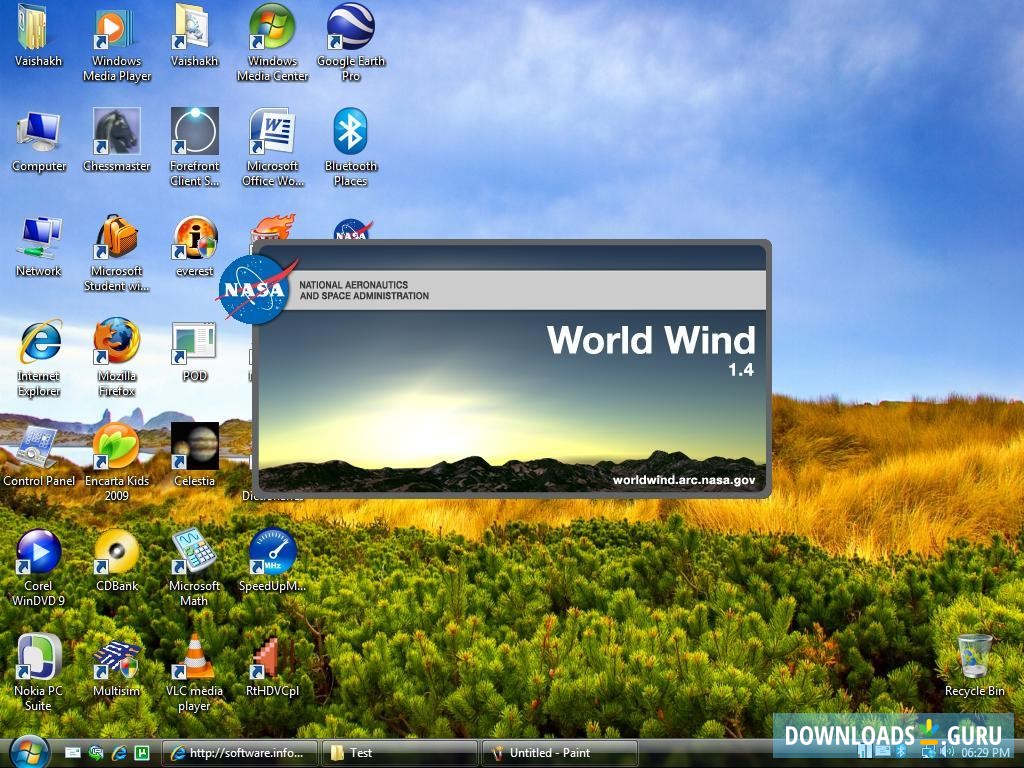

- #NASA WORLD WIND FOR WINDOWS10 HOW TO#
- #NASA WORLD WIND FOR WINDOWS10 INSTALL#
- #NASA WORLD WIND FOR WINDOWS10 SOFTWARE#
- #NASA WORLD WIND FOR WINDOWS10 CODE#
- #NASA WORLD WIND FOR WINDOWS10 LICENSE#
Its associated navigator translates user input to movements of the globe. Behind the scenes, the WorldWindow retrieves imagery and elevation from the internet as needed, generates 3D terrain, and traverses the layer list to display its contents. Apps need do nothing but add layers and perhaps shapes and initiate redraws when it does so. The WorldWindow manages the display of the virtual globe or 2D map. The first thing most apps do is populate it with one or more imagery layers. The layer list holds all layers displayed in that WorldWindow, but it is initially empty. The globe and navigator may subsequently be replaced by the app if desired. These are all created automatically during construction of the WorldWindow object. Each encapsulates a separate canvas and operates independently of the others.Ī WorldWindow contains a Globe, a Navigator and a Layer List. Here the canvas is given an initial width and height of 1000 pixels, but the style element causes it to resize to the width of the containing when displayed, and maintain the initial aspect ratio.Ī web page may contain multiple WorldWindows. The canvas, itself, is defined in the associated HTML page as follows: Here’s an example of creating a WorldWindow for a canvas whose ID is “canvasOne”: var wwd = new WorldWind.WorldWindow("canvasOne") The WorldWindow directs all drawing to that canvas. The canvas is given an ID and that ID is handed to the WorldWindow constructor to tell the WorldWindow its drawing surface. The app developer is responsible for creating the canvas, typically by defining a element in static HTML. Almost all interactions between the app and Web WorldWind occur through a WorldWindow.Ī WorldWindow encapsulates an HTML canvas element. It represents the presence of Web WorldWind in the web page. Home Modulesĭocumentation generated by JSDoc 3.6.WorldWindow is the fundamental Web WorldWind object. WebWorldWind can be found in the WebWorldWind 3rd-party notices and licenses

#NASA WORLD WIND FOR WINDOWS10 SOFTWARE#
NASAWorldWind/WebWorldWind also contains the following 3rd party Open SourceĪ complete listing of 3rd Party software notices and licenses included in Specific language governing permissions and limitations under the License.
#NASA WORLD WIND FOR WINDOWS10 LICENSE#
Under the License is distributed on an "AS IS" BASIS, WITHOUT WARRANTIES ORĬONDITIONS OF ANY KIND, either express or implied. Unless required by applicable law or agreed to in writing, software distributed Version 2.0 (the "License") you may not use this file except in compliance

The NASAWorldWind/WebWorldWind platform is licensed under the Apache License,
#NASA WORLD WIND FOR WINDOWS10 CODE#
Npm run test:watch automatically runs WorldWind's unit tests when source code changesĬopyright 2003-2006, 2009, 2017, 2020 United States Government, as representedīy the Administrator of the National Aeronautics and Space Administration. Npm run doc generates the WorldWind API documentation
#NASA WORLD WIND FOR WINDOWS10 INSTALL#
Npm install downloads WorldWind's dependencies The build is known to work with Node.js 12.18.0 LTS.
#NASA WORLD WIND FOR WINDOWS10 HOW TO#
Provides many simple examples showing how to use all of For novices on WorldWind,Ī Get Started tutorial is the place to go. You'll also find there links to many Web WorldWind resources, including a user guide. The Web WorldWind Developer's Guide has a complete description of Web WorldWind'sįunctionality. has setup instructions, developers guides, API documentation and more. High-resolution terrain and imagery is retrieved from remote servers automatically as needed, whileĮnabling developers to include their own custom terrain and imagery. Web WorldWind provides a geographic context, complete with terrain, and aĬollection for shapes for displaying and interacting with geographic or geo-located information in 3D and 2D in any The European Space Agency has provided valuableĬontributions to this platform since 2015. Please direct questions to our new email virtual globe API in JavaScript for the web, developed by NASA. More information on the release can be found at these links: Web WorldWind 0.10.0 and WorldWind Java 2.2.0. WorldWind's API remains largely unchanged in this release and we are committed to maintaining a consistent API in future releases. The new version of WorldWind Java focuses on upgrading to Java 11 and JOGL 2.4 as well as a switch to Apache 2.0 license. The new version of Web WorldWind addresses potential vulnerabilities in the code and underlying packages. Web WorldWind 0.10.0 and WorldWind Java 2.2.0 are now available on GitHub. Home Web WorldWind New versions of WorldWind released


 0 kommentar(er)
0 kommentar(er)
